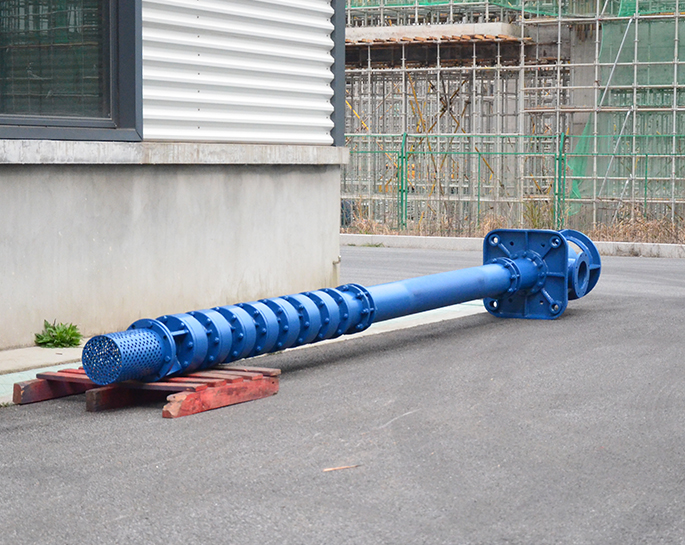What are the key components of a Vertical Turbine Fire Pump?
May 22, 2024
Share:
A Vertical Turbine Fire Pump is a specialized type of centrifugal pump designed to pump water from deep sources. It is composed of several key components that work together to ensure efficient and reliable operation. Here are the main components:
1. **Pump Bowl Assembly**:
- **Impellers**: These are the rotating components that impart energy to the water, increasing its pressure and flow rate. They are typically multistage, meaning multiple impellers are stacked in series to achieve the desired pressure.
- **Diffusers**: These stationary components surround the impellers and convert the kinetic energy from the impellers into pressure. They also direct the flow of water to the next stage.
- **Bowls**: These house the impellers and diffusers, forming the stages of the pump.
2. **Column Pipe**:
- **Column Assembly**: This pipe connects the bowl assembly to the discharge head. It houses the pump shaft and guides the pumped water upward.
- **Line Shaft**: This long, rotating shaft transmits mechanical energy from the motor at the top of the pump to the impellers at the bottom. It is supported by shaft bearings.
3. **Discharge Head**:
- **Discharge Head Assembly**: This is the top section of the pump that directs the flow of water from the column pipe to the discharge piping. It also supports the driver (motor or engine) and includes various connection points for controls and instrumentation.
- **Shaft Seal**: This component prevents water from leaking out of the pump where the shaft exits the discharge head. Types of seals include mechanical seals and packing glands.
4. **Driver**:
- **Electric Motor**: The most common driver for vertical turbine fire pumps, providing the mechanical energy needed to drive the pump.
- **Diesel Engine**: Often used as a backup or primary driver in areas where electrical power is unreliable or unavailable, ensuring the pump can operate during emergencies.
5. **Suction Bell**:
- **Suction Bell**: Located at the very bottom of the pump, this component helps direct water into the first stage impeller efficiently.
6. **Bearings**:
- **Shaft Bearings**: These bearings support the line shaft within the column pipe, reducing friction and wear.
- **Bowl Bearings**: Located within the pump bowl assembly, these bearings support the rotating impellers.
7. **Strainer**:
- **Strainer**: A screen or mesh attached to the suction bell to prevent large debris from entering the pump and causing damage or clogging.
These components together ensure that the Vertical Turbine Fire Pump can effectively lift water from deep sources and deliver it at the necessary pressure and flow rate for fire suppression systems.

1. **Pump Bowl Assembly**:
- **Impellers**: These are the rotating components that impart energy to the water, increasing its pressure and flow rate. They are typically multistage, meaning multiple impellers are stacked in series to achieve the desired pressure.
- **Diffusers**: These stationary components surround the impellers and convert the kinetic energy from the impellers into pressure. They also direct the flow of water to the next stage.
- **Bowls**: These house the impellers and diffusers, forming the stages of the pump.
2. **Column Pipe**:
- **Column Assembly**: This pipe connects the bowl assembly to the discharge head. It houses the pump shaft and guides the pumped water upward.
- **Line Shaft**: This long, rotating shaft transmits mechanical energy from the motor at the top of the pump to the impellers at the bottom. It is supported by shaft bearings.
3. **Discharge Head**:
- **Discharge Head Assembly**: This is the top section of the pump that directs the flow of water from the column pipe to the discharge piping. It also supports the driver (motor or engine) and includes various connection points for controls and instrumentation.
- **Shaft Seal**: This component prevents water from leaking out of the pump where the shaft exits the discharge head. Types of seals include mechanical seals and packing glands.
4. **Driver**:
- **Electric Motor**: The most common driver for vertical turbine fire pumps, providing the mechanical energy needed to drive the pump.
- **Diesel Engine**: Often used as a backup or primary driver in areas where electrical power is unreliable or unavailable, ensuring the pump can operate during emergencies.
5. **Suction Bell**:
- **Suction Bell**: Located at the very bottom of the pump, this component helps direct water into the first stage impeller efficiently.
6. **Bearings**:
- **Shaft Bearings**: These bearings support the line shaft within the column pipe, reducing friction and wear.
- **Bowl Bearings**: Located within the pump bowl assembly, these bearings support the rotating impellers.
7. **Strainer**:
- **Strainer**: A screen or mesh attached to the suction bell to prevent large debris from entering the pump and causing damage or clogging.
These components together ensure that the Vertical Turbine Fire Pump can effectively lift water from deep sources and deliver it at the necessary pressure and flow rate for fire suppression systems.







